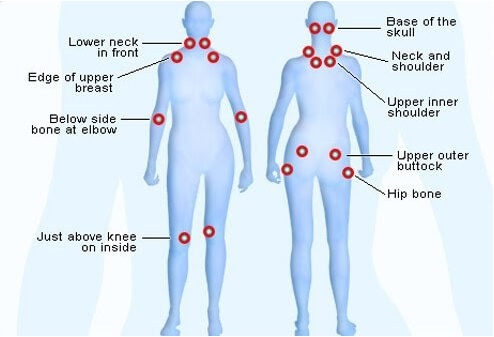Biomagnetism: Understanding Fibromyalgia

Fibromyalgia is a common neurologic health problem that causes widespread pain, stiffness, and tenderness of muscles, joints, and tendons. These symptoms are often accompanied by chronic fatigue, anxiety, depression, restless sleep, and disturbances in bowel function. In the United States, it affects approximately 4 million individuals and around 0.2 - 6.6% of the world’s population.
This disorder typically starts in the 40s to 60s and is most common in women, but can also strike men and children. People with autoimmune conditions like rheumatoid arthritis or lupus are more prone to the disorder than the general population. This disorder usually sets in after physical trauma, infections, surgeries, psychological stress, and/or other causes. It is unfortunate that people continue to experience this condition when advanced healthcare options exist such as Biomagnetism which attempts to restore balance to the body naturally through the use of magnets.
Symptoms of Fibromyalgia
Chronic (long-term), widespread pain, and tenderness throughout the body are the most common symptoms of Fibromyalgia. The pain may feel like a throb or burn or a deep muscle ache. The severity of symptoms varies from person to person. The pain may also be worse in the mornings.
Other symptoms of Fibromyalgia include:
- Extreme tiredness and fatigue that does not get better with sleep or rest
- Cognitive and memory problems (“Brain fog”)
- Problems with either going to sleep or staying asleep
- Anxiety and/or depression
- Muscle fatigue, with/without twitching or cramping
- Headaches
- Irritable bowel syndrome (IBS)
- Painful menstrual periods
- Numbness or tingling of hands and feet
- Temperature sensitivity
- Increased responsiveness to sensory stimuli such as hot, cold, scents, light, and loud noises
Women with Fibromyalgia often have more morning fatigue, pain all over the body, and IBS symptoms than men.
What causes Fibromyalgia?
The factors that cause Fibromyalgia are not known, but the most widely accepted theory is that Fibromyalgia is caused by changes in the neurotransmitters of the brain. The abnormality of certain chemical levels in the brain could trigger such a disorder. Therefore, the pain-causing transmission happens repeatedly or lesser amounts of pain are exaggerated until they feel unbearable. In this condition, the pain receptors of the brain become over-sensitive and over-reactive to the pain signals. Some contributing factors may include:
- Physical or emotional traumas
- Chronic stress
- Genetics (family history of Fibromyalgia)
- Previous pain syndromes
- Multiple infections
- Chemical or heavy metal toxicities
- Rheumatic disease like rheumatoid arthritis
Triggers for fibromyalgia flares
Fibromyalgia may also result in intense pain or fatigue, called a flare. Flares can be made worse or triggered by several factors, including:
- Hormonal changes
- Temperature and weather changes - people often report pain symptoms worsening during cold or wet weather.
- Dietary changes - some research suggests levels of dietary fructose gained from carbohydrates may impact fibromyalgia symptoms.
- Changes in schedule or increases in travel
- Reduced sleep or non-restorative sleep
- Increased or reduced levels of exercise
- Physical or psychological stress
It is clear that there is a range of psychological, physical, behavioral, and environmental factors that may trigger or aggravate these flares.
Tender points

“Tender points” on the body are one hallmark of Fibromyalgia. When you press on the tender points, they feel sore. They can be located on the back of the shoulders, head, knees, hips, and elbows. There are 18 possible tender points in all. You may have discomfort in some or all of these locations. Tender points are used by doctors to help diagnose Fibromyalgia.
Conclusion: Living with Fibromyalgia
The quality of life can be affected when the person lives with fatigue, pain, and other symptoms daily. As the symptoms are often difficult to physically see, it is easy for those around them to dismiss the pain as imaginary.
Give Biomagnetism therapy an opportunity to help your body heal naturally.
Biomagnetism may be combined with other techniques in combination to help you feel better faster. Lifestyle changes can also help ease symptoms.
Rely on peers who understand what you’re going through, like:
- Certified Biomagnetism therapists
- Close friends
Be gentle with yourself. Most significantly, have faith that you can learn to manage and cope with your health condition.
References
- Frank BL. Biomagnetic Pair Therapy and Typhoid Fever: A Pilot Study. Med Acupunct. 2017 Oct 1;29(5):308-312. doi: 10.1089/acu.2017.1253. PMID: 29067141; PMCID: PMC5653337.
- Moses Durazo (2017)How Magnets Can Save Your Life: A Holistic Guide For Optimal Living (Biomagnetism For An Extraordinary Life) (Volume 1), 3rd ed., CreateSpace Independent Publishing Platform; 3rd edition (July 31, 2017).
- Comment
- Posted by Dr. Luis F Garcia